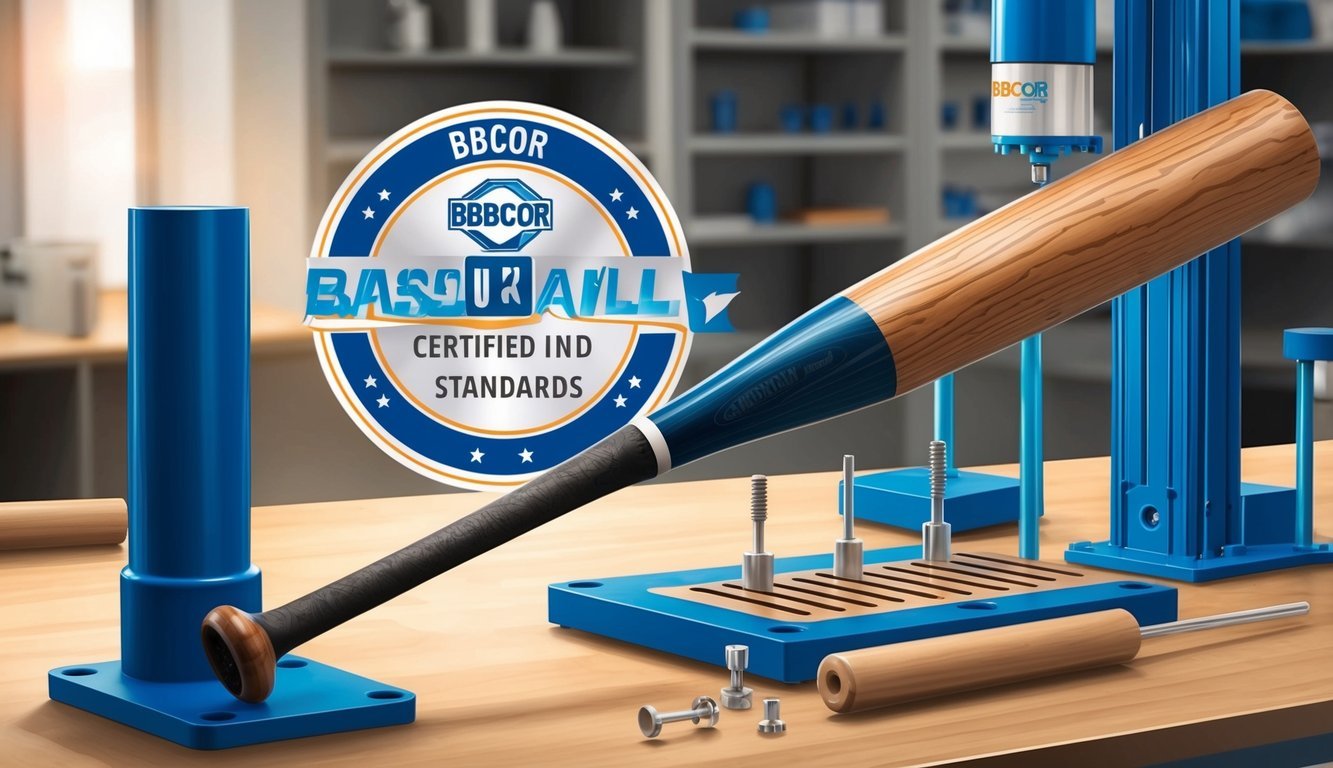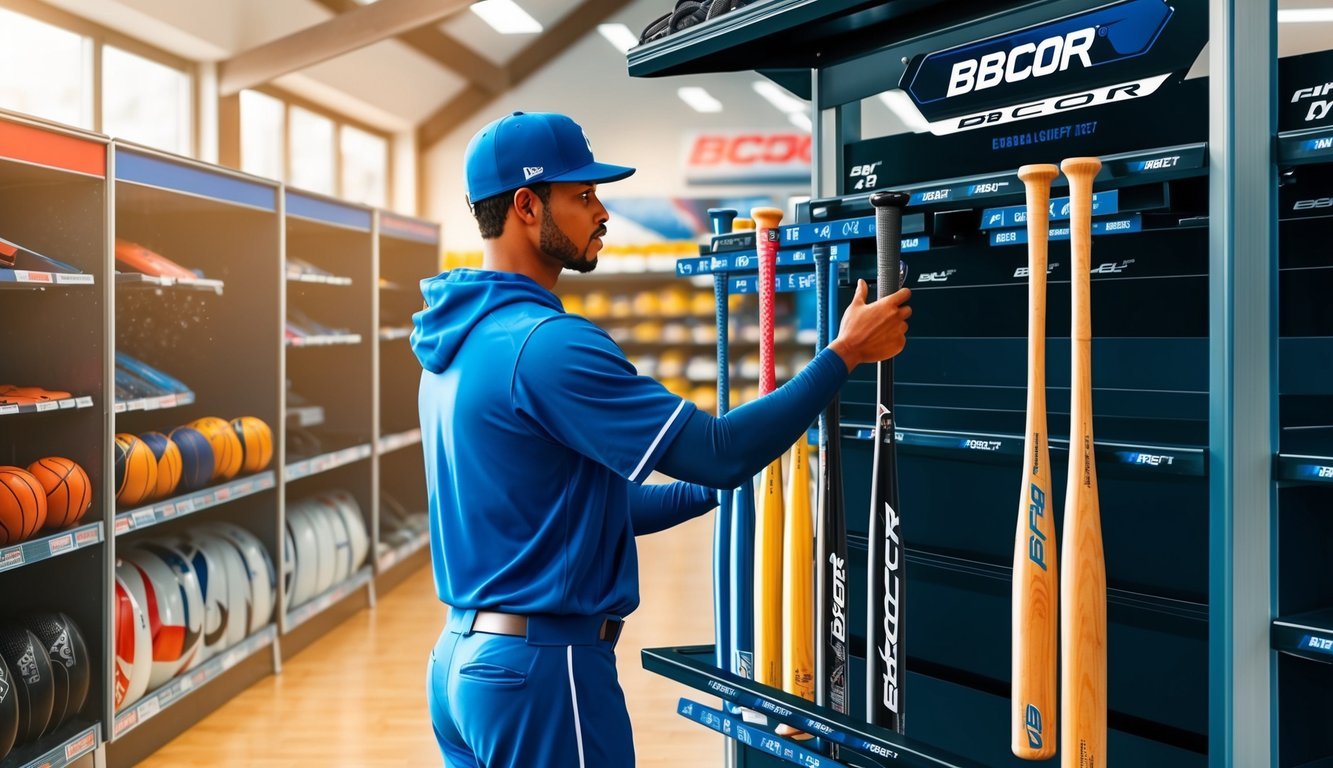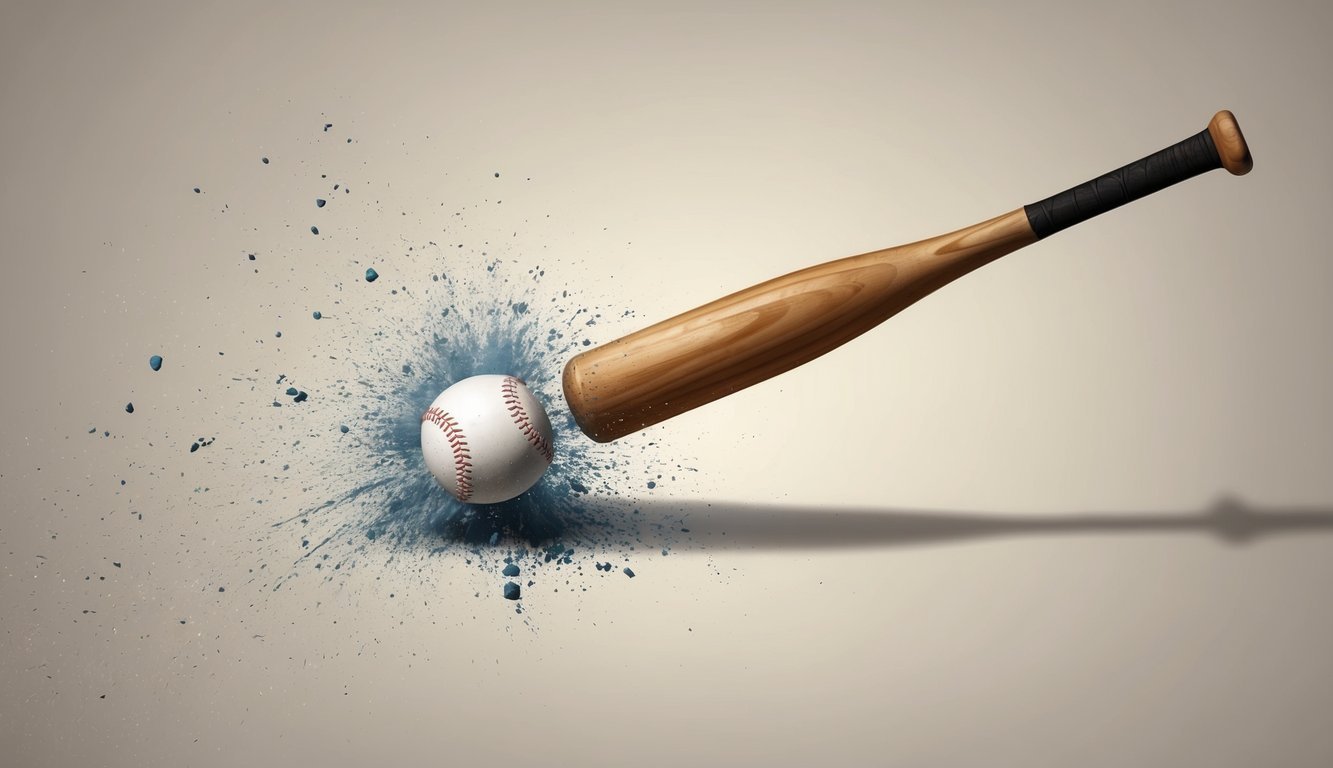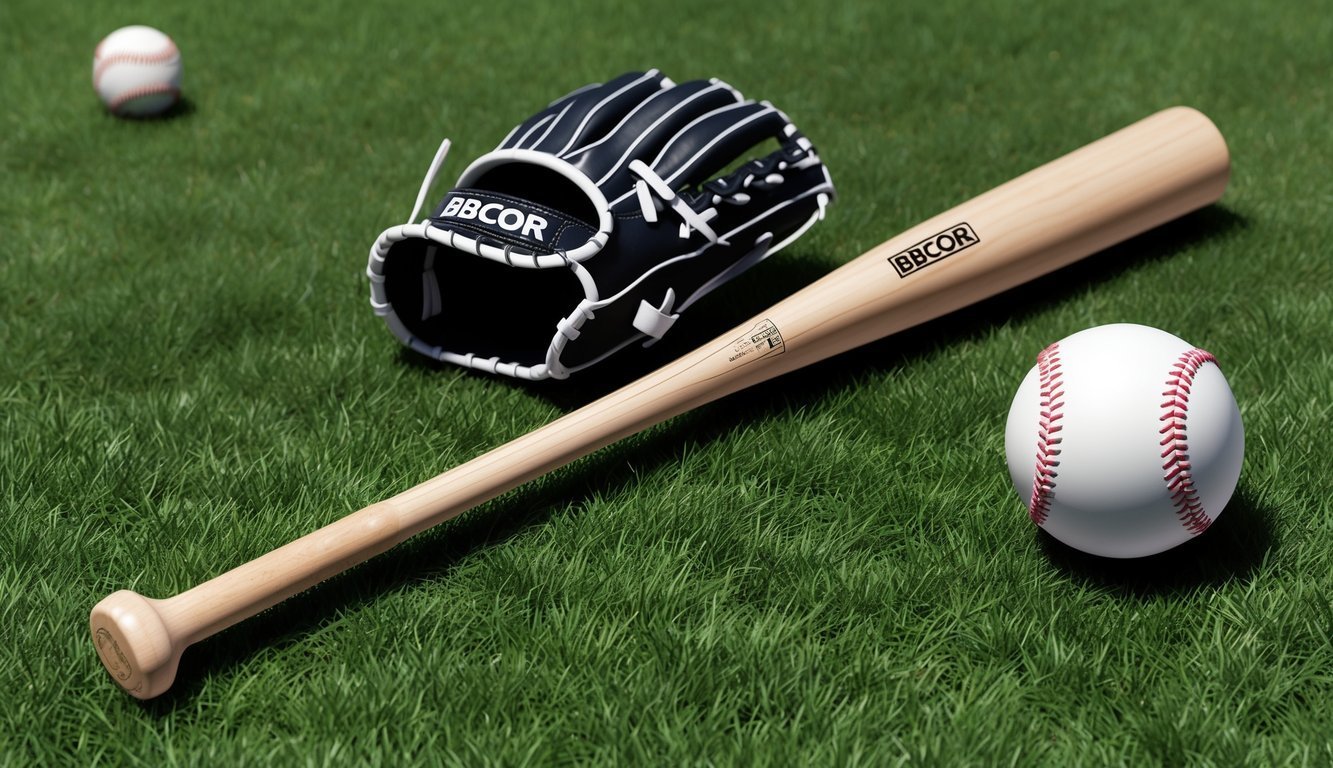BBCOR is a term that baseball players, coaches, and fans encounter frequently when discussing bats.
It stands for Bat-Ball Coefficient of Restitution, a standard that regulates the performance of non-wood bats used in high school and college baseball. BBCOR certification ensures that metal and composite bats perform similarly to traditional wood bats, maintaining fairness and safety in the game.
The BBCOR standard was implemented to address concerns about the increasing power of metal and composite bats.
These modern bats were allowing players to hit balls at speeds that posed safety risks to pitchers and infielders.
By limiting the trampoline effect of non-wood bats, BBCOR helps level the playing field and keeps the focus on player skill rather than equipment advantages.
For players and parents shopping for baseball equipment, understanding BBCOR is crucial.
All non-wood bats used in high school and college play must meet BBCOR requirements.
This certification is clearly marked on approved bats, making it easy for consumers to identify compliant equipment.
By choosing BBCOR-certified bats, players ensure they’re using legal, safe, and fair equipment on the field.
Understanding BBCOR and Its Importance
BBCOR certification ensures fair play and safety in baseball.
This standard has revolutionized the game at high school and collegiate levels, impacting equipment design and player performance.
Definition of BBCOR
BBCOR stands for Batted Ball Coefficient of Restitution.
It measures how much energy is transferred from the bat to the ball upon contact.
The National Federation of State High School Associations and the National Collegiate Athletic Association require BBCOR-certified bats for official play.
This standard limits the trampoline effect of metal bats, making them perform more like wooden bats. BBCOR bats must not exceed a .50 coefficient of restitution, ensuring consistent performance across different brands and models.
Manufacturers must rigorously test their bats to meet BBCOR requirements.
This certification process involves strict guidelines and independent verification to maintain the integrity of the standard.
Impact on Player Safety
BBCOR bats significantly enhance player safety on the field.
By reducing ball exit speeds, they give pitchers and fielders more reaction time to defend against hard-hit balls.
This safety improvement is particularly crucial for pitchers, who are most vulnerable to line drives.
The reduced ball speed decreases the risk of severe injuries from batted balls.
BBCOR bats also help level the playing field between offense and defense.
They encourage players to focus on proper hitting technique rather than relying solely on bat performance.
The Role in Maintaining Integrity of the Game
BBCOR certification plays a vital role in preserving baseball’s competitive balance.
It ensures that hitting performance is more dependent on player skill than equipment technology.
This standard prevents an unfair advantage that could arise from using high-performance metal bats.
It keeps the game closer to its traditional roots while allowing for the durability and consistency of metal bats.
BBCOR bats promote a style of play that values strategy, skill, and teamwork over raw power.
This shift has led to a more nuanced and exciting game at high school and collegiate levels.
The standard also creates a smoother transition for players moving from aluminum to wooden bats in professional leagues.
It helps develop skills that translate well across different levels of play.
BBCOR Certification Process

BBCOR certification ensures baseball bats meet strict performance standards for high school and NCAA play.
The process involves rigorous testing to measure bat performance and compliance with regulations.
Certification Requirements
To obtain BBCOR certification, bats must meet specific criteria:
- Maximum barrel diameter of 2 5/8 inches
- Length-to-weight ratio of -3 (e.g., 33-inch bat weighs 30 ounces)
- BBCOR .50 or lower rating
Manufacturers submit their bats for testing to approved laboratories.
Each certified bat receives a distinctive silkscreen stamp, indicating its BBCOR compliance.
Testing and Compliance
The testing process uses a specialized cannon to fire baseballs at stationary bats.
Sensors measure:
- Ball exit speed
- Trampoline effect (bat-ball coefficient of restitution)
Tests are conducted at multiple pre-determined spots along the barrel.
To pass, bats must consistently demonstrate a BBCOR rating of .50 or lower.
Periodic retesting ensures ongoing compliance.
Bats failing to meet standards may have their certification revoked, making them ineligible for sanctioned play.
Differences Between BBCOR and Other Bat Standards
BBCOR bats differ from other standards in performance, materials, and regulations.
These differences impact player safety and game dynamics in baseball.
Comparing BBCOR with BESR and USSSA
BBCOR replaced the BESR (Ball Exit Speed Ratio) standard in 2011 for high school and college baseball.
BBCOR bats have a reduced trampoline effect compared to BESR and USSSA bats.
This means the ball doesn’t come off the bat as fast, enhancing player safety.
USSSA bats, often used in youth leagues, have a 1.15 BPF (Bat Performance Factor).
They typically provide more pop than BBCOR bats.
BBCOR bats must have a -3 length-to-weight ratio, while USSSA bats can have various drops.
USA Baseball bats, another youth standard, perform similarly to BBCOR but don’t have the -3 drop weight restriction.
Wood Bats vs. Non-Wood Bats
BBCOR aims to make non-wood bats perform like wood bats.
Wood bats are made from a single piece of wood, often ash, maple, or birch.
They don’t have the trampoline effect of metal or composite bats.
Non-wood BBCOR bats can be made from aluminum alloy or composite materials.
These materials allow for better weight distribution and larger sweet spots than wood bats.
Composite BBCOR bats often provide a better feel and reduced vibration compared to aluminum bats.
However, they may require a break-in period to reach peak performance.
Aluminum alloy BBCOR bats are typically more durable and have a lower price point than composite bats.
They’re ready to use right out of the wrapper without a break-in period.
Selecting the Right BBCOR Bat

Choosing the ideal BBCOR bat involves considering various factors and matching them to a player’s hitting style.
The right bat can significantly impact performance on the field.
Factors Influencing Bat Choice
Length-to-weight ratio, or drop, is crucial when selecting a BBCOR bat.
This number represents the difference between the bat’s length in inches and weight in ounces.
A -3 drop is standard for BBCOR bats.
Swing weight affects how the bat feels during use.
Balanced bats offer more control, while end-loaded bats provide more power but can be harder to swing quickly.
The bat’s construction also matters.
One-piece bats offer more power and less flex, while two-piece designs provide more flex and reduced vibration on mishits.
Material choice impacts performance too.
Aluminum bats tend to have a larger sweet spot, while composite bats often provide a lighter swing weight.
Tips for Different Hitting Styles
Contact hitters often prefer lighter, more balanced bats for quicker swings and better bat control.
A balanced, two-piece design can help these players maintain consistency at the plate.
Power hitters typically opt for heavier bats with end-loaded weight distribution.
These bats can generate more force on contact, leading to longer hits.
Players should consider their strength and size when choosing a bat.
Taller or stronger players may handle longer, heavier bats more effectively.
Trying out different bats during practice can help players find the right fit.
Many sporting goods stores offer demo programs for this purpose.
Remember, the best bat is one that feels comfortable and allows the player to maintain proper hitting technique throughout their swing.
When selecting a bat, players should also consider their personal strength and playing style to ensure they can optimize their performance. Baseball bat weight options can vary significantly, so it’s crucial to test different weights to find the one that enhances your swing without sacrificing control.
Ultimately, choosing the right bat will not only improve your hitting technique but also boost your confidence at the plate.
The Impact of BBCOR on Game Play

BBCOR bats have significantly altered baseball dynamics, affecting both offensive strategies and player adaptations.
These changes have reshaped how the game is played at various levels.
Changes in Offensive Strategies
BBCOR bats have led to fewer home runs and lower offensive statistics overall.
Teams now focus more on small-ball tactics.
Bunting, hit-and-runs, and stolen bases have become more prevalent.
Coaches emphasize contact hitting over power swings.
Players aim for line drives and gap shots rather than trying to clear the fences.
This shift has created a more balanced game, with defense and pitching gaining importance.
Some leagues have seen a decrease in runs scored per game.
This change has made each run more valuable, increasing the strategic elements of baseball.
Adaptations by Players and Coaches
Players have adjusted their swing mechanics to maximize bat speed and contact.
Many have switched to lighter bats.
They often prefer 1-piece designs for better control.
Strength training has become crucial.
Players focus on developing quick, powerful swings to compensate for the reduced trampoline effect of BBCOR bats.
Coaches now spend more time on situational hitting drills.
They teach players to hit to all fields and capitalize on defensive shifts.
Some players have experimented with bamboo or carbon fiber bats within BBCOR restrictions.
These materials can offer unique performance characteristics while staying compliant.
The transition to BBCOR has created a more level playing field across different divisions and leagues.
It has reduced the advantages of composite bats, making player skill more crucial.
